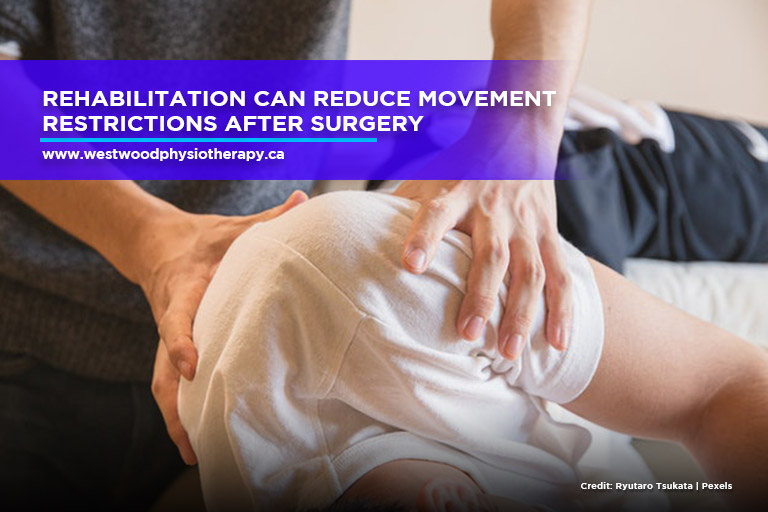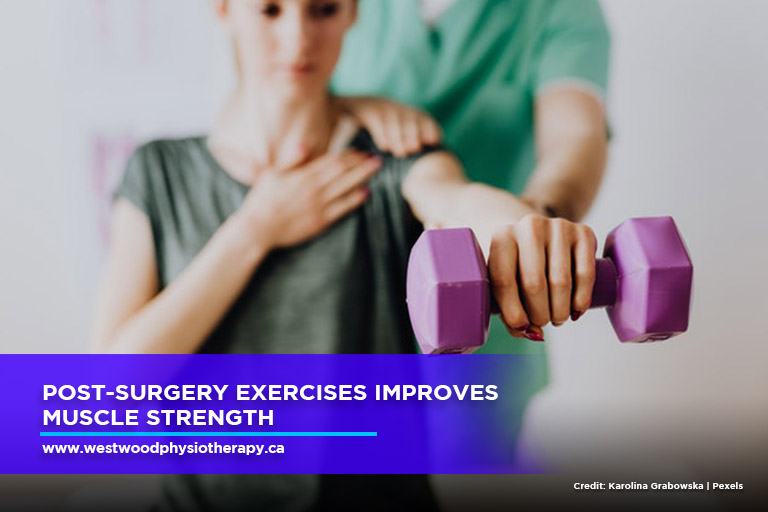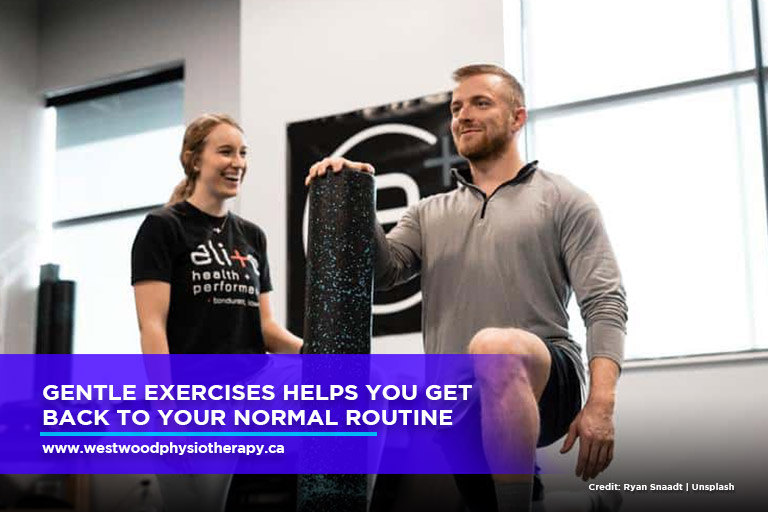Many people worry about the long recovery times that come with surgical operations, so much so that many people put off surgeries when faced with the prospect of a long and arduous recovery ahead. Fortunately, post-surgical rehabilitation can considerably shorten recovery time. Rehabilitation not only helps shorten post-surgery recovery time, but it also teaches you how to take care of yourself and gradually return to your everyday activities.
Physical therapists are trained to assist patients of all ages in regaining strength and mobility post-surgery. Patients are led through particular exercises, stretches, and other activities designed to aid in their recovery. Physical therapists and their assistants utilize treatments that target certain parts of the body, and most importantly, they may customize treatments to improve a patient’s overall health, assuring long-term success.
Who Are Candidates for Post-Surgery Rehabilitation?
Physical therapy can help you recover faster after a variety of surgeries, including:
- ACL And Meniscus Repair
Following ACL knee ligament repair and meniscal cartilage injuries, which are common among athletes, physical rehabilitation is necessary. Rehab after ACL reconstruction allows you to build your quadriceps and strengthen your hamstring, helping patients heal faster and lowering the possibility of future injuries. - Back Surgery

Restrictions in the hips, shoulders, and other parts of the spine are common among patients. Physical therapy tailored to the patient’s specific needs may also help with regions where the patient’s movement and flexibility have been hampered by the surgery. Because of the sensitivity of a back or spine surgery, supervised physical therapy is required. Gentle stretches and exercises will be used by your therapist to help you get the blood circulating and gradually move up to everyday activities.
- Heart Attack/Bypass Surgery
The period of recovery after bypass surgery depends on the patient. While some people might anticipate a full recovery in less than 12 weeks, others may need to wait longer as their bodies heal from surgery stress. This can be shortened with post-cardiac surgery rehabilitation.
.
Supervised physical therapy aids patients in recovering after heart or bypass surgery by gradually reconditioning the heart and other muscles. Exercises for cardiovascular, flexibility, and strength conditioning can all be included in rehabilitation. - Joint Replacement Surgery
You can’t just stay at home and wait for your body to heal after knee, hip, or shoulder replacement surgery. To help the area recover properly and completely, you’ll need to do physical therapy activities to strengthen it.
During your recovery from joint replacement surgery, a physical therapist teaches your body how to move again and helps you regain your prior level of fitness. You can also expect reduced pain and discomfort during the process.
Why Is Rehabilitation Important After Surgery?
To truly reap the benefits of physical therapy after surgery, you should begin a post-surgical rehabilitation program as soon as your doctor says you’re ready and carefully stick to your treatment plans and instructions.
Here are 8 reasons why post-surgical rehabilitation is important:
1.Better Muscle Function
Physical therapy can aid in the treatment of tight and tense muscles. Your physical therapist can offer a variety of stretching techniques to help you improve the way your muscles work, restore muscle strength, and increase endurance. These workouts are guaranteed to be safe and customized to your specific needs.
2.Enhance Mobility
Certain regions or parts of the body may experience movement restrictions as a result of surgery. This is the body’s natural reaction to try to protect the affected area, which can result in muscle/tissue tightness, swelling, spasms, and decreased range of motion.
Through movement, strengthening exercises, myofascial release, and other manual approaches, physical therapy can help patients regain mobility. Additionally, workouts to strengthen the core, back, and pelvic muscles boost stability and improve balance, which can aid recovery following procedures such as knee or hip replacement.
3.Improve Balance and Flexibility
Inactivity weakens muscles, causing them to stiffen and become more susceptible to injury. Normal daily actions such as reaching overhead, climbing stairs, and standing from a seated position can be greatly hampered when muscles are tight and joints are stiff. Before your post-surgical rehabilitation, you may be prone to falls. Gentle stretching exercises are one of the first activities you should do following surgery to keep your susceptible muscles flexible and enhance your balance so you can conduct daily activities without fear of accidents and further injuries.
4.Improve Blood Circulation
Physical therapy might help you enhance your blood circulation and speed up your recovery. Blood transports oxygen and other nutrients throughout the body, which helps reduce inflammation and speed up healing. Improved circulation not only speeds up recovery but also lowers the risk of a blood clot forming. A massage, for example, can help to increase circulation. Increased blood circulation can be achieved by a variety of basic workouts and simple movements advised by a physical therapist.
5.Minimizes or Eliminates Pain and Inflammation
Pain and swelling after surgery are common side effects of the healing process, and it varies significantly from person to person. Reducing inflammation promotes healing and increases movement, all of which help to alleviate pain. During recovery, exercises and mobility can help to reduce swelling and prevent surgery pain from becoming chronic.
The appropriate type of post-surgical care can help lessen or eliminate the amount of pain you experience following your surgery without the use of opioids. A physical therapist may employ both icing and ultrasound to relieve localized discomfort.
6.Prevent Complications
In all surgeries, even how minimal, you are required to rest while your wounds heal. However, inactivity increases the chance of problems, such as blood clots. These blood clots can break off and travel through the circulatory system to other parts of the body, causing a blockage. If it reaches the heart, it can be fatal.
As a result, doctors frequently advise patients to begin physical therapy activities as soon as possible following surgery. The first few movements you’ll undertake may be as easy as rotating your ankles. These exercises help in blood circulation and the prevention of complications.
7.Reduce Scar Tissue Formation
Scar tissue arises after an injury or surgery, and soft tissue contracts as part of the natural healing process. Scarring can occur everywhere on the body, and excess scar tissue can limit function and movement for months after surgery. To reduce scar tissue and restore normal flexibility, a physical therapist might use a variety of tissue mobilization treatments, such as massage and shockwave therapy.
8.Regain Strength
Physical therapy can help you get back to your previous level of health. Following surgery, patients may have to relearn how to move in specific ways that don’t cause discomfort or cause less pain.
Increased strength and correct range of motion are two of the key aims of physical therapy. The faster you regain strength and stamina, the sooner you can resume your normal routine. After surgery, a physical therapy program can be tailored to target the precise areas of your body that require strengthening.
Post-surgery rehabilitation may be inpatient, outpatient, or a combination of both, depending on your surgery. As you recuperate, your therapist will provide you with post-surgery recovery tips and will even assign you home exercises to complete on your own.
If you’re in Guelph, Ontario, and looking for “post-surgery rehabilitation centres near me,” Westwood Physiotherapy & Wellness is here to help. We also offer physiotherapy, massage therapy, and shockwave therapy to ensure your full recovery. Book an appointment with us now by calling us at (519) 341-5161!





